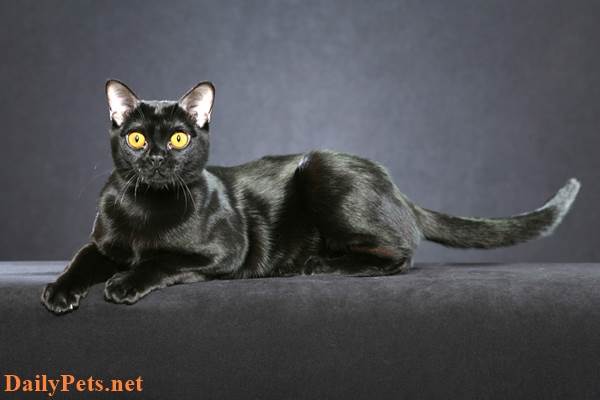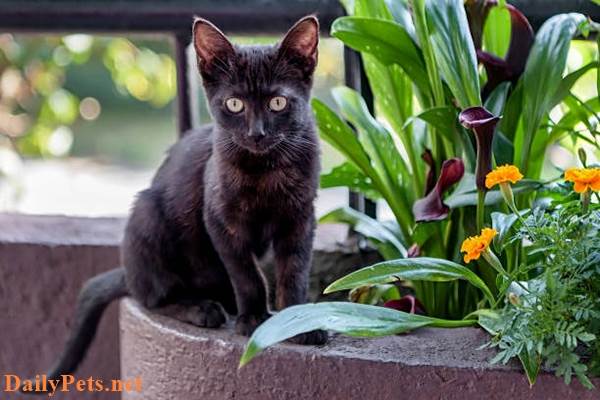Join DailyPets.net to learn more about Bombay cats through this article.
Bombay cat origin history
The history of the Bombay cat is associated with the American breeder Nikki Horner’s desire to create a miniature version of the black panther by crossing a short-haired American cat with a Burmese cat. The first breeding of Nikki Horner failed, but the second time, in 1965, the world’s first Bombay cat was born. The Cat Fanciers Association recognized the breed in 1976, and the International Cat Association in 1979.
However, do not be fooled by their Bombay name; this is not an Indian cat breed in the way you are associated with the Bombay harbor of this country. The reason Nikki Horner took the name of the Indian port of Bombay for her cat is because this is the place where the black leopard (Black Leopard) was first discovered. Horner wants his cat to have a special mark so people can remember them.
Bombay cat physical characteristics
The Bombay cat is short-haired and has all the same physical characteristics as a Burmese cat, but with a little more muscle, a little longer body, and legs. Although they look quite small, when you pick them up, they will feel heavier than their body. The reason is that they have a rather heavy skeleton; a male can weigh more than 6 kg, and an average female 3 – 5 kg.

Bombay Cat.
Bombay cats are also very recognizable cats because their characteristics are jet black, glossy, smooth coat, copper yellow eyes, and a round head. If you put two pictures of the Indian black panther and the Bombay cat side by side, you will see an incredible similarity.
However, the Bombay cat, if compared, is a cat with a low life expectancy; on average, it can live from 9 to 13 years, depending on living conditions.
Bombay cat personality traits
A Bombay cat will inherit the gentle, docile nature of the American Shorthair and a little curiosity of the Burmese. So they will be a terrestrial animal that can live in harmony with other dogs, cats, birds, fish, .. in the house and especially with children.
Bombay cats will be friends with children if you take the time to teach them to play ball or chase games with them. Don’t worry; they won’t scratch anything because of their gentle nature.
How to take care of Bombay cats
Bombay cats are healthy, combined with short coats, so their care is not too complicated.
Bombay cat food
You can feed Bombay cats with commercially available nuts, canned pate, or wild foods such as fish, chicken, beef, etc. Or learn how to make your cat pate at home to save money if you are not too rich.
Bombay cat hair care
Bombay cats are short-haired, so they shed less than other long-haired cats and do not require frequent bathing. Maintain a bath for Bombay cats every 2 weeks to 1 month combined with regular nail clippers to avoid injury when cats rub their eyes, brush their teeth to prevent periodontitis, and spend a little money to buy a spare comb, then sit and brush for them.

One tip is that you can use a brush soaked in olive oil to polish their coat if you want to show them out to your friends, but DailyPets.net recommends that you bathe them again when you get home; being careful is better.
How much do Bombay cats cost?
The cost of Bombay cats can vary due to location, sources of acquisition, and individual cat quality. Prices for these cats can range from a few hundred to several thousand dollars, contingent on various considerations.
Reputable breeders or established facilities often command higher prices, while cats with strong pedigrees and desirable qualities may also come at a premium. Some cats are accompanied by certification papers that vouch for their lineage and overall quality, contributing to higher costs.
Additionally, vaccination history and healthcare can impact pricing. Geographical location plays a role as well, with regional popularity affecting prices. When considering the purchase of a Bombay cat, careful research into sources, documentation, and the cat’s health history is recommended before making a decision.





